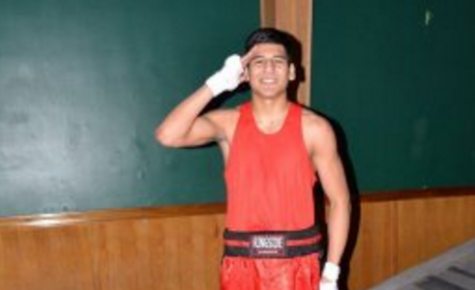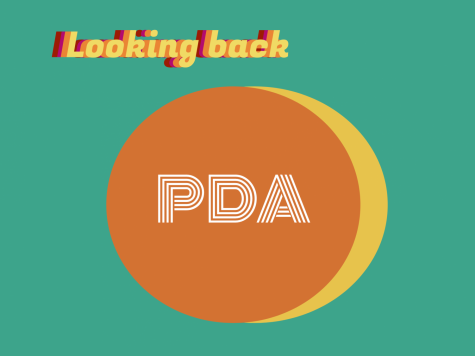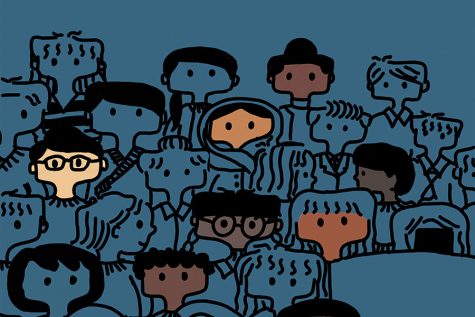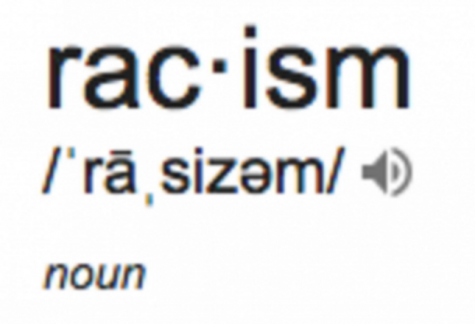Your donation will support the student journalists of West High School. Your contribution will allow us to purchase Scholarship Yearbooks, newsroom equipment and cover our annual website hosting costs.
After
January 7, 2020
Dodging punches
For Wankana, one fight was enough to deter him from reentering the realm of physical violence at school. Wankana experienced an altercation with another student while in junior high and feels strongly that that particular instance redirected his educational course.
“I used to be a very different student back in junior high. Skip class, don’t do homework and do that,” Wankana said. “More of just hanging out with a different group of people changed me from who I was to who I am now.”
Although the suspension from school certainly impacted Wankana, the social reactions he experienced as a result of the fight are what ultimately forced Wankana to change his behavior.
“I thought people saw me different, and people would think that I was pretty violent because of the fight,” Wankana said. “I accepted the punishment, it was my fault that I got into the fight. I learned from that and into high school it changed me completely.”
Byars was an active participant in fights throughout elementary and junior high, but ceased using physical violence after an incident during his freshman year at West High, which occurred between another male student near the coffee shop on the main floor.
In this particular instance, Byars did not intend to fight the other student but was encouraged by his peers through social media and constant peer pressure.
“Before the fight there were…people instigating and having us meet up,” Byars said. “A lot of people took a position for the simple fact that they were instigating it and stuff like that.”
After receiving a one-week suspension from school, Byars came to realize the consequences of his actions and the future ramifications he would be faced with if he were to continue fighting at school. Byars also recognized the value in holding one’s ground and not buying into the riot mentality created by spectators.
“I realized at that point that I got in a fight because of what other people told me and not what I heard out of his mouth,” Byars said. “[I also realized] that just because of me reacting off of what other people said that I was actually risking my freedom and not just my education.”
The race question
Though bystanders no doubt add fuel to the fire of a fight, some students believe a major reason conflicts continue to break out falls on the way they may be racially profiled by administration. Darlyn Gossiho ’22 has seen firsthand the way teachers and counselors assume certain minority groups to have been involved in a conflict.
“After a fight usually, like seven out of 10 times there’s probably going to be like a white person asking all the black people what happened or this and that,” Gossiho said. “I don’t like that because it feels like we’re ghetto or something. I don’t want to be seen as a ghetto girl. I want to be seen just as the girl that saw the fight.”
These types of presuppositions can make students feel as though they’ve been stripped of their individual identity.
“Most of the people that do fight here in the schools are black, African American. That doesn’t mean like all the black people and all the Latino people know what happens in the fight,” Gossiho said. “Because people see those like different races fight they just generalize it with the whole race.”
Both Flynn and Gossiho agree that the best way for adults at West to temper the fight culture and restore peace would be simply getting to know and understand students and what internal conflicts are causing them to react violently.
“I feel like teachers just need to talk to students more. Not even just about fights but everyday life,” Gossiho said. “They should figure out the underlying problem.”
I don’t want to be seen as a ghetto girl. I want to be seen just as the girl that saw the fight. — Darilyn Gossiho '22
Breaking the ice
Implicit bias is a problem all faculty have been working to eliminate, and something Kidman recognizes within himself and the rest of the supervisory paras.
In working to deescalate fights and determining motives for the outbreak, faculty often depend on students for information. While their actions may appear biased by assuming someone’s knowledge on the situation based on their race, the more information that can be extracted from bystanders close to the altercation allows for the administration to better handle and deescalate the situation.
“Ultimately, we’re trying to keep the kids safe and try and get to the bottom of what did happen,” Kidman said. “If you were standing around a fight or saw it and can provide me with a little bit of information that I didn’t see or didn’t catch I would certainly ask you some questions.”
With nearly 1500 students in the building, it can be tough to form a personal connection with every student, and oftentimes the students involved in physical altercations are the most reluctant to open up to adults.
“The students that are having consistent behavior issues usually don’t allow for that trust quite as easily and it gets a little harder and maybe a little more callous when I have to reprimand them,” Kidman said.
In addition to their disciplinary responsibilities, Kidman and the rest of the supervisory paras are working on creating positive relationships with students to help improve their image of adults in the building.
“Nobody’s going to listen to you if you’re always the guy that’s just yelling at people,” Kidman said. “The way I find success in my job is by building relationships. Other than that I’m just a person walking in the halls telling people to go to class.”
Administrative aftermath
For students involved in fights at school, there are certain disciplinary actions mandated by the district and followed out by West High administration. The West High student handbook states that “students who engage in physical fighting or physical fighting related behaviors will be suspended out of school.”
The district’s zero-tolerance policy resulting in 3-5 day suspensions is meant to keep the student body safe as well as prevent any future altercations between students involved.
“If a student is going to go back and engage in another physical altercation while they’re still here because they’re upset sometimes they just need that break from school,” Devries said. “The main reason is we’re trying to keep kids safe and we need that time to deescalate the situation. It usually does take a couple days because fights usually result as a build-up of conflict.”
After a fight, the administration separates the students and gives each participant a chance to tell their side of the story. Following the suspension, the students are also encouraged to partake in mediations to resolve any remaining issues.
“If both kids can agree to sit down and talk about what happened then we always try and get them in the same room,” Devries said. “When we have face-to-face conversations it’s always better than whatever discussions that are going on on social media that can help to stir it up.”
Devries and Roarick are also aware that a single mediation does not heal all wounds, and that drama and peer pressure continue weeks after a fight has taken place.
“We know that when we have a conversation, it’s not the end of it. We know that there’s going to be continued drama and conversations with their friends and their peers,” Devries said. “Myself and John [check in] all the time really until we know everybody has moved on from it.”
Implementing change
While the combative culture at West High may seem inevitable to students, the West High administration has begun implementing a new program to deter students from engaging in physical violence and promote active bystander intervention.
West High’s Mentors in Violence Protection (MVP) program is still in its earliest stages of realization, but has already begun recruiting around 150 potential candidates to be trained as mentors for the upcoming school year.
Assistant principal Molly Abraham was moved to pursue the project after reading results from the district climate survey and witnessing fights at school.
“Our recent fights are pretty public. Kids might videotape it in the moment, but I think it’s actually kind of scary if you step back and think about it,” Abraham said.
West High’s “MVP team”, which currently consists of Abraham and seven other faculty members, will work in coordination with City and Liberty to help roll out the program for all high schools in the district for the 2020-2021 school year.
The team is currently seeking a teacher for next year’s MVP classes and hopes to get upperclassmen mentoring incoming freshmen early next year through an extended AFT period twice a month.
In seeking mentors, the administration urged teachers to nominate students with a wide variety of backgrounds in order to connect with as many incoming freshmen as possible.
“We asked teachers to nominate kids who they thought could be potential leaders and we said that we wanted a diverse representation,” Abraham said.
Jenny Wagner works as an At-Risk Interventionist at Cedar Rapids Kennedy High School, where the MVP program has been in place since 2016. Wagner stresses the student-led component of the program which enables genuine conversations between students that are often less impactful when heard from administration.
“Really having that authentic student voice of an upperclassman mentoring to the freshmen is so powerful,” Wagner said. “Us adults sometimes just need to get out of the way.”
Really having that authentic student voice of an upperclassman mentoring to the freshmen is so powerful. Us adults sometimes just need to get out of the way.
— Jenny Wagner, Cedar Rapids Kennedy High School At-Risk Intervionist
While students can receive silver cord hours for their involvement in the program, Wagner emphasized the importance of training mentors with a genuine interest in changing the school culture.
“Just make sure that students who are signing up to be the mentors have a sincere desire to have a conversation about domestic violence,” Wagner said.
Changing or reculturing the social norms and climate of a notably complex school environment or community culture can take five to seven years.
— Alan Heisterkamp, national MVP director
“Certainly if you see a physical thing we want kids to get somebody or if they hear of something that’s going to happen,” Abraham said. “Violence is a bit of a misnomer to me because I think that makes people think you’re hitting people. Really we focus a lot on verbal, emotional and technological violence too.”
With West High under reconstruction both physically and structurally, changing the school culture is becoming the new top priority for students and faculty alike.
“It can’t be incumbent upon a few kids or a few administration to try and change this culture of fighting,” Barnhouse said. “I do feel like we all have to be part of it.”




